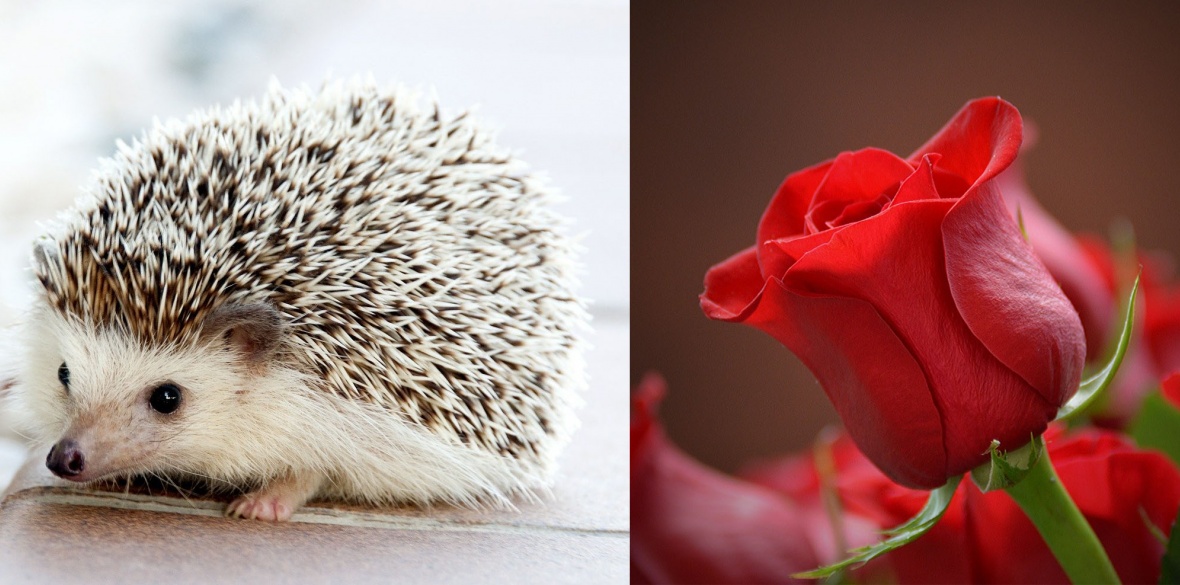This is the last article you can read this month
You can read more article this month
You can read more articles this month
Sorry your limit is up for this month
Reset on:
Please help support the Morning Star by subscribing here
A ROSE by any other name would smell as sweet, said Bill from Stratford.
For Valentine’s Day the florists of Britain and the world sell us British lovers more than eight million roses, mostly red.
Sixty per cent come from Kenya and the rest of the bunch came from Colombia, India, Tanzania and Ecuador. More than nine out of 10 fresh cut roses imported into Britain’s market arrive by air. Many come via the huge international flower markets of the Netherlands.
Whenever I am writing about plants or animals in these pages, I always try to use the official or scientific Latin name at least once. With roses the genus name is Rosa.
There are several species names and most continents have a native species rose. Rosa canina and gallica are natives of Europe, Rosa virginiana, Rosa arkansana and Rosa arcicularis are from the United States.
Most Valentine’s Day roses will be complex hybrids originating as a combination of ancient China roses, tea roses, and native European roses. Names can be both long and complicated.
Now let’s look at our common garden hedgehog, its Latin moniker is Erinaceus europaeus and it is called that all over the world.
We can thank the Swedish botanist Carl Linnaeus for the really elegant and beautifully simple two-part naming system that he invented, first for plants like roses but now used for all living things, including hedgehogs.
However there are many other local and folk names for plants and animals which can be a lot more colourful and great fun.
Our prickly friend can be a urchin, hedgepig or furze-pig but best of all is the old Romany name of hotchi-witchi.
When it comes to plants, regional names can be just as fascinating and amusing. There is no doubt about the best reference for these local names. It is the late Geoffrey Grigson’s book The Englishman’s Flora and it is one of my favourite reads.
Grigson was no mean poet and he brought a poet’s enthusiasm for juicy language to his vast collection. The wood anemone, we learn, is bread and cheese and cider in Dorset, granny-thread-the-needle in Somerset and snake flower in Dorset, while the greater stitchwort goes by adder’s meat in Cornwall, Baalam’s smite in Suffolk and Mother Shimble’s snick-needles in Dorset.
I get lost for hours in this book. The pretty fritillary has a roll-call of dreadful nicknames – bloody warrior, Turk’s head, mournful bell of Sodom.
Monkshood, a lethal plant once cultivated by poisoners and still used as such in even fairly recent detective fiction, has a range of mainly very innocent names such as birds of paradise and Lady Lavinia’s dove carriage in Somerset.
The juniper has the horrendous name of bastard killer – yes, it was once used to procure abortions. In today’s huge enthusiasm for all things gin, have we forgotten that juniper means gin in Dutch and gin was always Mother’s ruin?
Some plants have an amazing number of local names. The common dandelion is Taraxacum officianale to the scientist but has hundreds of local names.
Here are a few of the best: bum-pipe, burning fire, clock-flower, clocks-and-watches, combs-and-hairpins, Devil’s milk-plant, fairy clock, Irish daisy, lay-a-bed, lion’s teeth, mess-a-bed, pee-a-bed, piss-a-bed, shitabed. They bear witness to the many uses of the plant from as medicines, diuretics, cosmetics, poisons for your relatives and making next door’s cows sick.
My favourite local plant name is for the house leek (Sempervivums) a pretty family of rosette-forming succulents that sometimes escape from the garden to grow on old cottage roofs. They too have many names but in my book they will never be anything else but welcome-home-husband-however-drunk-you-be. What a Bobby-dazzler of a name.
Bobby dazzler is a very old but long-lasting English expression for anything of exceptionally good quality or striking appearance. In fact the description began life as a local name for any species of particularly striking butterfly.
Not so pretty is the Tudor name arsefoot. It’s any water bird with its legs positioned far back on their bodies. The name was first used for the great crested grebe. Later, British sailors called penguins arse-feet.
Mouldwarp is an Old English word for the mole. The animal throws soil once known as mould and warpis is an ancient word meaning to throw or spread around.
I love all of these different country names for all kind of wildlife, especially names for common birds. They were usually either descriptive of the birds’ appearance or behaviour, or they were onomatopoeic; based on the birds’ call or song.
Here are a few of my favourite almost lost bird names: wink-a-puss was once a common name for an owl as were billy wix, horn coot and hornie hoolet.
Today the bird we used to call the falcon is called the hobby. It’s old name was ripohook.
Did you know that just after the WWII Peter Adolph invented a game of table soccer? He wanted to call it The Hobby but that name was too generic to be allowed as a trademark so he called it Subbuteo from the latin name of the bird the hobby – Falco subbuteo.
If you see kestrels over motorway verges you will understand why they were once called hoverhawks or wind-fanner. The merlin was once tweedler.
But why was the song-thrush called mavis? The bullfinch was called a nope or alp – maybe onomatopoeic? Shufflewing is the dunnock – a good bit of observation. The wren, stumpy toddy.
It was once thought that the tiny goldcrest – Britain’s smallest wild bird – hitched a lift on the back of woodcocks to cross the North Sea on migration – was once called woodcock pilot. We now know it makes the amazing journey unaided.
Sheep-stare is a starling. The colourful jay from its call became Devil’s scritch.
Let’s finish with the fact that many common birds were given first names and some are still common today. Jenny wren is perhaps the best known and not far behind is tom tit.
Saving the best till last, the ever-loveable long-tailed tit has hundreds of folk names, among which some of the best and funniest are: bumbarrel, Jack-in-a-bottle and, best of all, hedge mumruffin.
No time for any more now, I have to put this red ribbon bow around the neck of the hedgehog hotchi-witchi I’m giving my wife as her Valentine.











